The Moon is a desolate rock, completely incapable of harboring life as we know it. Despite being our closest celestial neighbor, conditions on the surface couldn’t be more different from the warm and wet world we call home. Variations in surface temperature are so extreme, from a blistering 106 C (223 F) during the lunar day to a frigid -183 C (-297 F) at night, that even robotic probes struggle to survive. The Moon’s atmosphere, if one is willing to call the wispy collection of oddball gasses including argon, helium, and neon at nearly negligible concentrations an atmosphere, does nothing to protect the lunar surface from being bombarded with cosmic radiation.
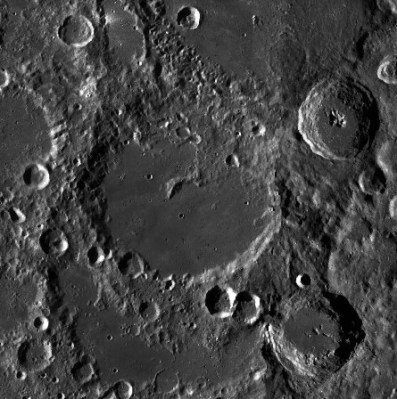
Yet for a brief time, very recently, life flourished on the Moon. Of course, it did have a little help. China’s Chang’e 4 lander, which made a historic touchdown in the Von Kármán crater on January 3rd, brought with it an experiment designed to test if plants could actually grow on the lunar surface. The device, known as the Lunar Micro Ecosystem (LME), contained air, soil, water, and a collection of seeds. When it received the appropriate signal, LME watered the seeds and carefully monitored their response. Not long after, Chinese media proudly announced that the cotton seeds within the LME had sprouted and were doing well.
Unfortunately, the success was exceptionally short-lived. Just a few days after announcing the success of the LME experiment, it was revealed that all the plants which sprouted had died. The timeline here is a bit hazy. It was not even immediately clear if the abrupt end of the LME experiment was intentional, or due to some hardware failure.
So what exactly do we know about Chang’e 4’s Lunar Micro Ecosystem, and the lifeforms it held? Why did the plants die? But perhaps most importantly, what does all this have to do with potential future human missions to that inhospitable rock floating just a few hundred thousand kilometers away from us?
Building An Off-World Greenhouse
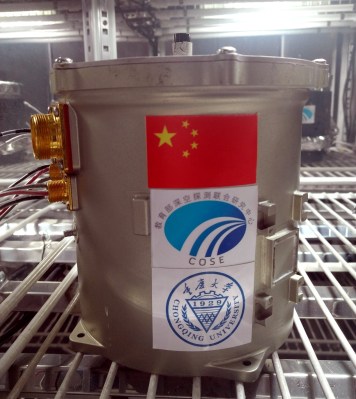 Thanks to interviews with members of the LME team and a handful of images that have been released by the Chinese media, we have a fairly good idea of how the experiment was constructed. The overall design could perhaps best be described as a metal bucket, with a flanged lid that’s screwed down to seal the contents inside. The only connections the device has to the outside world are electrical, with no provision for external air circulation or treatment. This would have been done to not only greatly simplify the design of the LME, but to prevent any possibility of its contents contaminating the lunar environment.
Thanks to interviews with members of the LME team and a handful of images that have been released by the Chinese media, we have a fairly good idea of how the experiment was constructed. The overall design could perhaps best be described as a metal bucket, with a flanged lid that’s screwed down to seal the contents inside. The only connections the device has to the outside world are electrical, with no provision for external air circulation or treatment. This would have been done to not only greatly simplify the design of the LME, but to prevent any possibility of its contents contaminating the lunar environment.
While it’s unlikely that spilling some Earth soil or seeds on the Moon would have much of an impact given the aforementioned environmental conditions, the scientific community demands that quarantine protocols be carefully followed when exploring other worlds. The fact that China made sure the LME was in compliance with these principles will likely be seen as reassuring to those who may have been concerned the Moon’s most recent visitor might have a somewhat cavalier attitude towards international agreements.
A small aperture at the top of the can, referred to as “light guiding module” by the designers, allows daylight into the chamber. This avoided (or at least reduced) the need for artificial lighting; this is important from a power consumption standpoint, but also served as a way to see if the plants would respond differently to sunlight on the Moon. The connectors on the side allow the Chang’e 4 to interface with the devices and sensors inside the LME, of which we know there were at least two cameras, a temperature sensor, a pump for the water, and a heating element of some type.
The LME is quite small, weighing in at only 2.6 kilograms (5.7 pounds) and offering its biological passengers just one liter of available volume to grow in. Despite this it actually contained several organisms, from fruit fly eggs to potatoes. A particularly interesting quote from chief researcher Liu Hanlong seems to indicate that the goal wasn’t simply to sprout a few seeds as later claimed, but for the LME to sustain a complex ecological microcosm: “The six organisms carried in the payload constitute a micro-ecological system containing producers, consumers and decomposers. Among them, plants produce oxygen and food for all consumers.”
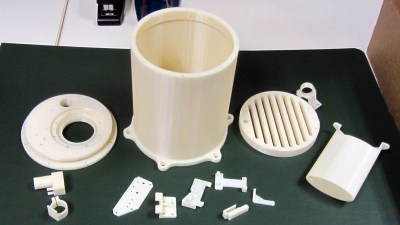
Interestingly, while the LME will go down as the first biological experiment of its kind conducted on another world, it certainly wasn’t the first envisioned. NASA devised a remarkably similar experiment called the “Lunar Plant Growth Habitat” which was supposed to catch a ride to the Moon during the now defunct Google Lunar X-Prize competition in 2015. Google never made it to the moon, and neither did NASA’s lunar biology experiment.
Elon Musk also famously wanted to send a greenhouse to Mars, and believed that the images of the plants sprouting on another planet would be inspirational to humanity in the same way pictures returned from the Apollo missions were. Unable to get what he considered a fair price on a rocket to Mars, he decided to just build the things himself; and a little company called SpaceX was born.
An Experiment Cut Short
The LME received the signal to activate the water pump and begin seed germination soon after touchdown, and Chinese media started reporting on the successful sprouting of the cotton seeds on January 14th. Given a nominal ten day germination period for cotton seeds, the timeline up to that point makes sense. But just a few days later the Chinese media declared the LME experiment over; saying that the biological samples had no chance of surviving the upcoming lunar night, and that the temperatures within the device had already reached -52 C.
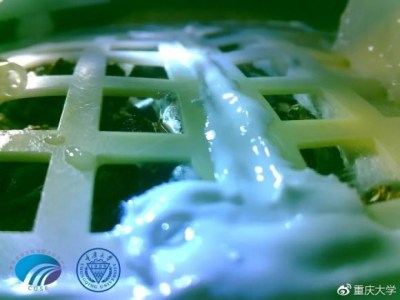
At this point it should be clarified that a “day” on the Moon lasts for 29.5 Earth days, a fact which was surely taken into account when the landing date for Chang’e 4 was determined. Further, we know from statements made by engineers who worked on the LME that it contains a heater; something which would be completely unnecessary during the scorching heat experienced during the lunar day.
Taking these facts into account, it seems logical to assume that the original goal was for the LME to continue functioning for at least some portion of the half-month-long lunar night cycle. The sudden announcement that the LME experiment had ended and was deemed a success on the basis of sprouted cotton seeds alone could have simply been damage control in response to some technical issue.
Indeed, some of the most recent reports from Chinese media are now saying that due to weight constraints, the batteries which were intended to power LME during the night were never installed on the spacecraft. It’s difficult to believe such an ambitious biological experiment would be sent to the Moon without the batteries necessary to power it, but as of right now, that’s the official explanation.
Inspiration, If Not Innovation
While the successful germination of a seed on the Moon is certainly a technical achievement worthy of praise, it didn’t exactly break any new ground from a biological standpoint. The LME was relatively well shielded from the outside temperature and radiation, and brought its soil, air, and water along from Earth rather than attempting to use lunar resources. The only real unknown involved was the lower gravity on the Moon, but as plants have been successfully grown in weightlessness conditions aboard orbiting spacecraft, it wasn’t likely to be a problem.
It’s debatable whether or not humanity learned anything new from the LME experiment, but that doesn’t mean it wasn’t worth doing. It might not happen on the Moon, and China might not be the one to do it. But some day, some how, we’ll get those awe inspiring pictures of green growth against the backdrop of another world that the likes of NASA and Elon Musk have been dreaming of.

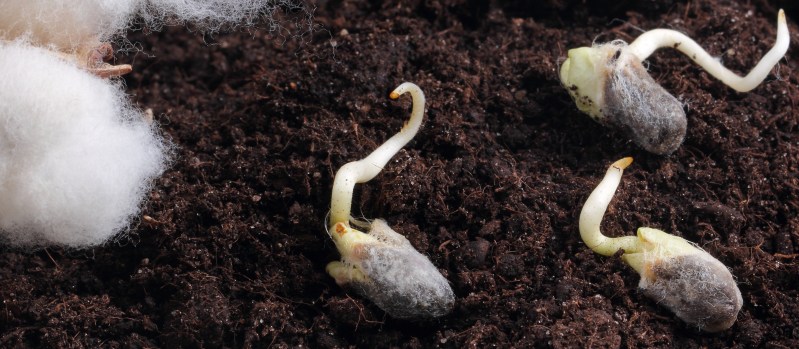















A full Lunar day is 29.5 Earth days. So a Lunar night is only half of that.
I was going to mention that too.
Me three.
Fixed. Thanks.
Yes, roughly half a month, i.e. 2 weeks.
I recall hearing something about “power loss” being cited as the reason for the untimely end of the seedlings, but with no more detail than that.
Would be curious to know!
I also read that it didn’t contain any heaters or light source. No real attempt to keep the plants alive. Basically a publicity stunt.
It’s not a publicity stunt, there’s still something to be learned from the successful germination alone. Obviously they weren’t meant to mature and be harvested or anything.
It’s a total publicity stunt. What would we learn from the seeds growing? The conditions on the lunar surface are long known and can be replicated on earth. There is zero point in doing it there, actually. Of course the beans will sprout, why would they not? If they don’t it’s because the seeds were bad, nothing else. The moon doesn’t have an invisible no-life-here-force-field!
We don’t know for sure until we try it.
actually yes, it has. Or more specific, i hasn’t have a life-here-force-field like the earth does, reflecting the sun flare particles with its magnetic force field
Before galileo did his experiment everyone knew heavy object fell faster than light ones, so why even try?
Why is called the dark side of the moon if there is a 29.5 earth day, light shining on it?
“dark” as in unknown/hidden, not dark as in without light. It’s also radio dark (as in, no transmissions from Earth).
This. I always thought the “Dark Ages” was a period when it was night all the time. I imagined going to school and the sky was black and the candles and lamps didn’t emit enough light. Then a teacher explained it all and I was a bit disappointed. :D
Calling it the “Dark Side” is just plain wrong and a sign of terminal ignorance. You hear news reporters using this term all the time, but that only goes to show just how little they’ve researched the subject they’re reporting on.
Word has it, news people have been known to get other stuff wrong, also.
“but that only goes to show just how little they’ve researched the subject they’re reporting on.”
“Dark side of the moon” as a phrase, meaning the hidden/unknown side of the moon, has usage going back to the 19th century. The usage is correct with “dark” meaning hidden/mysterious (as in “a dark secret” or “a dark corner of the world” or “the dark web”). “Far side” of course would be preferred in scientific text (and obviously in headlines “far side” would probably be better) but for the less scientific, more pop culture, etc. “dark” does portray the connotation for the reason for sending the probe there in the first place.
Pat, you’re welcome to your opinion, as am I. Many folks in the 19th Century still thought the world was flat. You sure you want to go THERE?
Many folks already werent as anal about topics as you are now. What is your point?
Many still do believe the world is flat, and that the Bible is literal, despite much evidence contradicting that.
Opinions are fine, but being obnoxious isn’t.
Actually, people have believed the earth was round for a very long time – just not covered with land. The longest-running theory was that there were two globes, a globe of land and a globe of water, and the land had a smaller radius with a centre offset from the globe of water – which made perfect sense, going by the scientific understanding of the day. If you assume this to be true, then any land has to be visible from one side of earth. Colombus was considered mad not because he wanted to go over the edge, but because he wanted to go more than halfway around the globe, with no chance of making landfall, just to get to India (remember that Columbus denied ever having discovered the Americas – he insisted to the end it never existed).
I think it’s pretty standard to use the term “dark” to mean “underexplored” or “unknown”, eg. the Dark Continent, the Dark Ages…
I do understand the concept of using “dark” to refer to something unknown, or unexplored. But I still maintain its use W.R.T. the Moon is not OK, and is usually used by news reporters or other laypersons who don’t know any better.
AFAIK, Newton never used the term. Neither did Tycho, Kepler, Galileo, Euler, Lagrange, D’Alembert, Laplace, or any other scientist who has studied the motion of the Moon (including me).
I think you’re on shaky ground on this one. But hey: If it makes you happy, keep saying “Dark side of the Moon.” It makes no difference to me.
Have we spent enough bauds on this one? May I go now?
Jack
“Pat, you’re welcome to your opinion, as am I. Many folks in the 19th Century still thought the world was flat. You sure you want to go THERE?”
One thing I’m definitely sure of is that I don’t want an age where people can’t use expressive language because of people being ridiculously pedantic.
Sir, you can go to the dark side. I’m done with you,.
@jackcrenshaw – Your probably just a troll but in case you actually mean what you say I will “shed a little light on the matter” for you. (See, that common phrase really does go both ways.
“I do understand the concept of using “dark” to refer to something unknown, or unexplored.”
Then quit whining.
“But I still maintain its use W.R.T. the Moon is not OK”
While I admit that water is wet I still maintain that all water is actually dry. See, it sounds pretty stupid to keep pushing for something even though you already admitted to knowing that it’s wrong.
“and is usually used by news reporters or other laypersons who don’t know any better.”
No, we already established that this use of “dark” is perfectly fine so there is nothing to even know about being wrong.
“AFAIK, Newton never used the term. Neither did Tycho, Kepler, Galileo, Euler, Lagrange, D’Alembert, Laplace, or any other scientist who has studied the motion of the Moon (including me).”
I’m pretty sure none of them made up the words moon or luna either. What is your point? Nobody owns all of human language. If you really want to be a word-troll go read up on the prescriptive vs proscriptive language debate.
“I think you’re on shaky ground on this one.”
I don’t know about the others you have argued with but there aren’t really any active fault lines near me. Oh.. you didn’t mean the ground was actually shaking? So I guess you pick and choose which common phrases are ok and expect the rest of us to all listen to you?
“But hey: If it makes you happy, keep saying “Dark side of the Moon.” It makes no difference to me.”
Then why are you here?
“Have we spent enough bauds on this one? May I go now?”
Please do so!
“Jack”
As in off?
@Pat
‘“Far side” of course would be preferred in scientific text (and obviously in headlines “far side” would probably be better)’
Well, “far side” would eliminate the potential for one certain misunderstanding. It is kind of Earth-centric though. If we really want to be all pedantic and trollish we can point out that maybe one day not all scientists will be on Earth. “Far Side” kind of loses it’s meaning when you are standing on Mars. Maybe we could call them the “Inward” and “Outward” Sides as in the sides that face inward/outward from the center of the Earth/Moon system?
But is not that far. It’s only one Moon radius or a half Moon diameter further into space. For those claiming for precision in the way it’s called, “the side of the Moon we never see from Earth because of Moon’s rotation” would be a better albeit a bit longer way to refer to it.
https://img.discogs.com/WkTCIsqPkmCnZY5bCAh82sNyeXg=/fit-in/350×350/filters:strip_icc():format(jpeg):mode_rgb():quality(90)/discogs-images/R-371269-1271515458.jpeg.jpg
So Pink Floyd would have something to name an album after.
…”The not so dark side of the moon”?
“There is no dark side of the moon really. Matter of fact, it’s all dark”
“Come over to the Dark Side, we have cookies!”
“I’ve always been mad, I know I’ve been mad, like the most of us have. They have to explain why you’re mad, even if you’re not mad.”
People looking at the moon’s orbit to find the dark side didn’t pay enough attention to the cover; obviously the light has been refracted before the dark side is discovered.
Remember to refract your mind after you get there, and you’ll find it. “Look around, choose your own ground.”
You beat me to it! :) I was just about to make the same reference!!! Whatever the provenance of the phrase, the use in language is mostly the same in terms of which side of the moon someone means even if its not really that dark in reality! I was pleased to see an experiment of this nature, even if the variables were very limited this time, it will be interesting to see where their next experiments go and what that means for the future.
“There is no dark side of the moon, really. Matter of fact, it’s all dark.”
I don’t know how many people have tried to keep plants healthy and not exactly growing bigger at the same time, but it is possible. Give them much fewer hours of just enough light and as cool a climate as the particular plant can handle, and plants can be kept in stasis. I don’t know what the power consumption could be minimized to, but there is definitely room to push limits. How many lumens does a sprout need anyway? Seems like a darn small battery could have kept them going for just one lunar night. Obviously, they were not trying to grow anything to maturity in a little can, except maybe the fruit flies!
Keep in mind that it gets down to 100°K there. Even with heavy thermal insulation that requires a lot of electricity to be kept at reasonable temperatures…
Assuming an 80 layer MLI, 100K outside, 300K inside, 20cm cube, I get 4W average power to maintain temperature.
4W? That’s about 1A from a LiPo. For 15 days or 360 hours. 360 Ah, or 360000 mAh. 1440Wh or 1.4 kWh. Just to keep a few seedlings alive. In this situation, I think it’s ok to let them die. The resources can be used for more useful experiments.
Yes, such a battery is quite expensive, more than 700,- Euros. Or “nothing” in the cost regions of space vehicles. :-)
Of course I know, that the real cost is in the transportation.
Getting this 4W from a small Plutonium pellet has the problem of control. The only possibility I could imagine is some kind of servo mechanism and a sealed tube into the vessel. If it is too hot the heater will be pulled out and if it is too cold it will be pushed into the tube, perhaps with some insulation plug at the outer end. If carefully designed, this could be done without external energy just by the huge temperature differential with a thermal actuator (bimetal coil, Nitinol wire or a wax phase change mechanism, like automotive coolant thermostats.
Of course the use of a nuclear heater pellet brings a bunch of regulatory problems with it, but I am quite sure the Chinese could find a solution to this, if they can acquire the required material.
100 K. There’s no degrees of Kelvin.
(In a Cockney accent)
“‘ow come the other guys get all the degrees?”
The Chinese government ended the experiment when the fruit flies began to show signs of independent thought.
No. They shut them down when they logged into Facebook.
I laughed way harder at this than I probably should have :)
Not quite “can you build an ecosystem on the moon?”, more like “can you build an ecosystem in a can?” The only involvement with the moon would be temperature (which can be simulated here), gravitation (which has been done many times), and light qualities (which can be simulated here as well). Not sure what unknown they were out to find.
Radiation.
No
“The LME was relatively well shielded from the outside temperature and radiation, and brought its soil, air, and water along from Earth rather than attempting to use lunar resources.”
Ok, obviously “relatively well shielded” did not mean that it could maintain it’s internal temperature through the night without power but I would hope that this does mean that the plants were shielded against radiation at least to an extent that it wasn’t an open question whether the plants could survive or not.
I find it annoying that every so often we get articles talking about ideas for shielding astronauts from radiation on long journeys or on the surface of other worlds. For example, placing the water supply in the walls of the ship or habitat is a common one. And yet we never see the article saying that someone has actually flown any gear to test the idea. Because they haven’t. Because we can spend billions on better ways to kill one another but can’t spend anything on actually growing as a species. It’s really great isn’t it? Then we also get the occasional article saying that we can never send people to other worlds because of the radiation problem. They usually include lots of information about measured levels of radiation in space or on mars, etc… but not a single mention of shielding options. As if we were going to send astronauts out into the solar system naked!
I think the radiation problem just gets used as an excuse to keep people on the ground so the money can be funneled to the same bomb-making contractors as it always has. At least until we have enough fallout that space isn’t any harsher than the Earth anyway!
They wanted to find out if they’d become good little comunists freed from the evil corruption of capitalism.
https://www.youtube.com/watch?v=g1Sq1Nr58hM
clearly they sourced chinese-made batteries… Yup capacity much smaller than expected…
With the price reduction of Chinese solar cells, they could have taken a lesson from ESA on the Rosetta asteroid lander and go with extra long solar panels. Also the heat from an overcharged lithium ion cell could have been recycled for the plants.
You do not need an overcharged battery to generate electrical heat. A resistor is much cheaper.
And very inconsistent quality. In previous life we had to quantine Chinese batteries and conduct quality studies. to try to prevent field failures. We gave up and started using top tier batteries …lower overall cost by huge reduction in field failures
If temperature is the issue, then they should have chosen a much more heartier specious other than cotton. Fragaria × ananassa can withstand very low temps, and can restore itself after single digit cold snaps. Also fruit flies are not needed as they are problematic to this fruit. Food for thought?
It gets a colder than a single-digit cold snap during a lunar night. A looooot colder!
koldCathode – I meant the species can SURVIVE (alive) single digit temps. However they have been known to self-resurrect (COME BACK ) after sub-zero induced death, when things go back to normal temps. So the common strawberry could be revived (or regrown) after a lunar night event. And you could use Ostracus’ “whizz” behind the dome to recycle its ambient heat and H2O. :-)
NASA has a whizz machine to do that too.
https://www.youtube.com/watch?v=fV1HkTTlZ_I
The whole written story sound negative to the rest of the world. Can’t we consider that others then the US has reached something what is worth to get respect? What have the US done the last years? Apollo was the last one on the moon which was from the US.
And then the comment:
-> It might not happen on the Moon, and China might not be the one to do it.
Why because they can? People wake up because there other nation as in Europe and Asia which has the potential todo things much better. Where was America the last years, and look now? All the ignorance about sience? Sorry and then these comments?
The leadership in all that has the US lost. The ISS is an international project. The Mars project is an international project, seen the hardware came from all over the world. Guys wake up please…
This is cartoonist Bruno Bozzetto’s view of how life began on earth…
https://www.youtube.com/watch?v=5pgANtzO2G4
The entire movie ‘Allegro non troppo’ is well worth seeing.
“We don’t want to contaminate the moon with our bacteria!”
vs
“We want to colonize/terraform other planets/moons!”
All it takes is one leak on a planet to “contaminate” it.
So no taking a whizz behind the dome?
Lander & rover are off during night. Both are expected to resume operation during day. Lander heater may be needed to make computer operable for start.
Plants, yeast & flies were doomed, not for lack of return vehicle but for small habitat. Seeds germinated on surface of media had poor chance of proper growth. Were they only intended to show if 1/6 g was enough to direct roots down & stem up? Looks as if stems failed.
It is hard for many westerners to comprehend how much simpler a project like this is when you can put individuals in charge of decisions, and then have the whole group just do what they’re told in good faith without trying to stab each other in the back to get their way!
There isn’t actually anything that strange or surprising about it if they designed it to have batteries, and then left them out in the end. But still included the experiment, and just accepted there would be less results. They don’t have a whole ecosystem of people fighting to get included in the project, and a public list of projects that almost made it, or a list of substitute projects that will be included if something isn’t done in time. And, they saved all the money that stuff costs by simply not doing it.
In the end the launch deadline was not flexible. Individual experiments were. Either something went over deadline and got left out, or something went over its weight budget and the mission commander made a choice what to leave out.
Occam’s Razor suggests there is no reason to make assumptions about failures, when the nominal process could already be expected to produce both complete and incomplete experiments. In the US where there is a different process, those other assumptions might be required to explain events.
And honestly, “they did it.” That might have been the most important expected outcome from the experiment. It wasn’t like done for purely academic reasons, as might be the case with that sort of experiment over here.
since this is the first instance food has been grown on the Moon, would this mean the Chinese are now the first to have colonised the Moon? or did they just get closer than anyone else since it was in a can with Earth soil instead of being on the Lunar surface.
No moon colony of humans exists or was started. First country to establish a moon colony in the moon with reproducing females will own the earth. Precisely aimed & timed impacts of moon rock on earth will be cheap to do for a solar powered moon colony. Do you want Iran, N. Korea, China or Russia to have the first colony? Magnetics, solar reflective furnaces and photovoltaic panels could make refined metals while people control is all from under ground, radiation shielded control rooms. If this all seems remote, please read the history of Islam and how 12 million in russia were killed after WW2.
The plants mutated due to solar radiation and were harvested by the rover to be sent back to china for testing to be used in a biological attack on the United States. I blame Carter.
“It’s debatable whether or not humanity learned anything new from the LME experiment”
(a) somebody has actually done it, rather than just talk about it
(b) the seeds survived the trip from earth.
Nice Information … If planets were as close as the moon to the earth. Or If the moon were replaced with some of our solar system planets like Jupiter, Mars, Saturn, Uranus. How would they look like?
In our article, we will show you, what the planets of the Solar System would look like from Earth if they were the same distance as the Moon, some 386,000 kilometers.
https://everydayscience.blog/what-would-it-look-like-if-planets-were-as-close-as-the-moon/